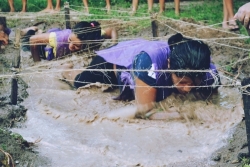The Surprising Secret to Building Effective Teams
Want to enhance your team’s effectiveness? You can do it in a word: “Trust.”When the people on your team work within an open and transparent culture, with people they trust, and with processes and procedures they believe in, any goal they set will have a greater chance of being achieved. But what creates this experience of team trust? A Google study on teamwork drilled down on the question, uncovering five factors that help build effective teams. The study included things like psychological safety, dependability, structure, and clarity around procedures and processes. Team members wanted a sense of meaning and purpose, and a clear grasp of their impact on goals.Ironically, a lot of leaders mistakenly believe that great teams are primarily about having the right personality. Not so. As outlined in MAP’s “Checklist for Effective Teams,” there are a number of very specific, proven elements that build that critical trust, enable greater goal achievement, and contribute to team success overall.Here are some ways team trust happens:1. Through an accountability system.
At MAP, leaders learn how to build teams to have an accountability system that’s been used for 50+ years and is proven to get results. Through the MAP Vital Factor Team process, key members meet on a regular basis to assess, evaluate, and drive the performance of the organization. Everyone on the team is on a level playing field. Goals are set, tracked, and measured in a consistent and equitable ways. It’s a system that comes with clear expectations and is set up to support transparency in regard to people’s activities and performance, both in their shortcomings and their successes.When people engage and participate in this accountability system, they benefit through greater performance, productivity, and higher morale. They’re also more apt to problem-solve, innovate, and turn good organizations into great ones.2. Keep a safe work environment.
In terms of “safe,” we don’t just mean “trust happens when people have a sense of physical safety.” That should be a given. A “safe” culture is one in which people experience psychological safety. In this type of team environment, employees feel they can speak truth and are free to express their feelings and ideas without fear of reprisal.Teams, and those on them, need to know they can make occasional mistakes in order to learn and grow. They aren’t afraid to take risks—and even thrive in risk-taking. They know and trust that if they work hard, they will be supported by their peers and leaders despite the outcome. Safe work environments have policies, procedures, and unwritten rules that protect the people both physically, psychologically, and yes, emotionally.3. With the right people onboard.
While you want to hire employees that are top in their fields, what’s more important is to be sure the people you hire are dependable, self-disciplined, and show respect for themselves and others. The right people will bring an attitude of action and momentum to team interactions and goal-achievement, clearly pumping others up and rallying to company and individual goals. These are “A” (not “C”) players—or at least, the type of team members who want to become “A” players and are willing to do the right things to make sure it happens. Get those people on board and keep them on board.



